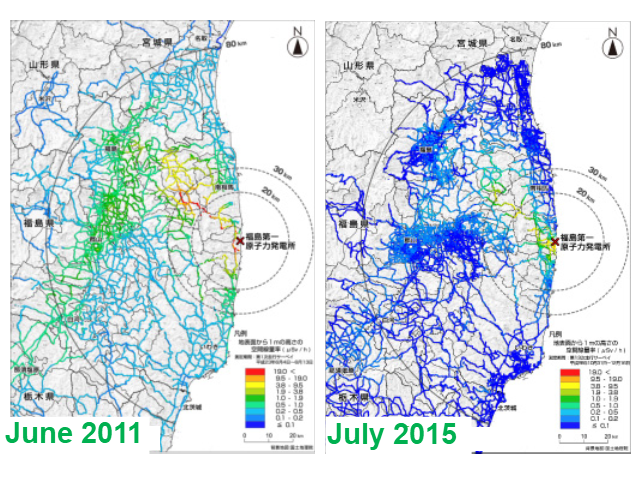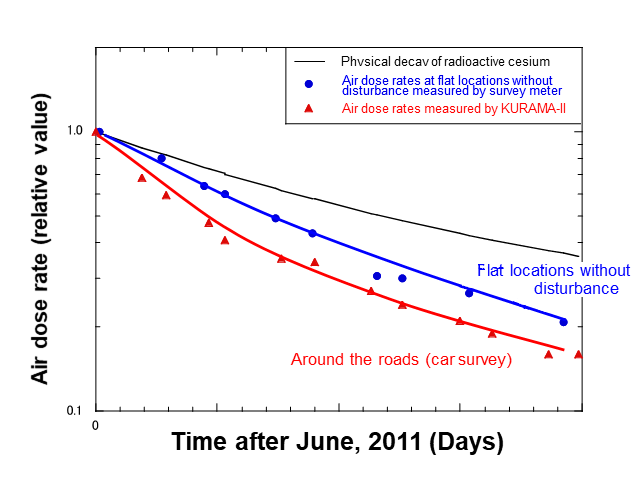Radioactivity and Air Dose Rate
(2016)
QHow has the distribution of air dose rates changed over time?
AAir dose rates and the amount of radiocesium in soil have decreased over time. Except for forests, air dose rates are decreasing much faster than those estimated by the half-life of the nuclides.

Fig.1 Changes in the air dose rate distribution measured by car-borne surveys

Fig.2 Time-dependence of averaged air dose rates
- Air dose rates on roads measured by car-borne surveys have decreased rapidly compared with those in flatlands without disturbance.
- This is because horizontal migration of cesium in flatland without disturbance is slow, while cesium deposited on roads and their surroundings moves more easily.
(These figures were made by JAEA based on results obtained in work for the Nuclear Regulatory Agency in 2014.)
